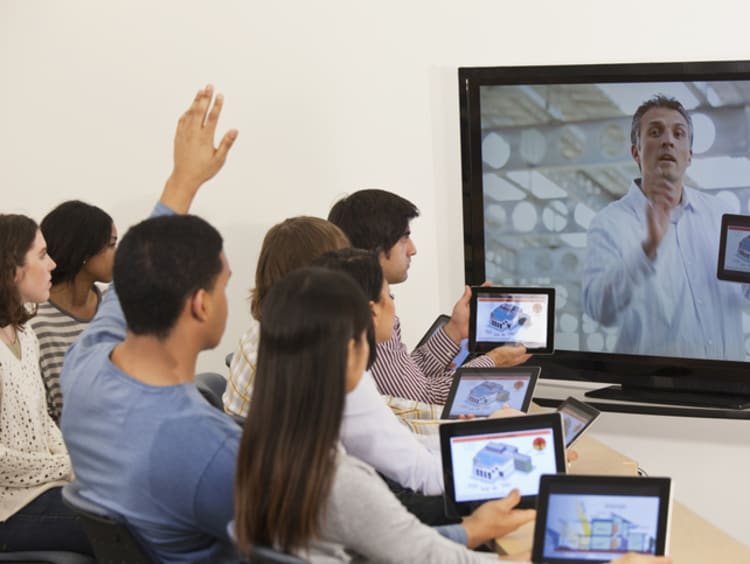Technology has revolutionized nearly every aspect of modern life, and education is no exception. With the integration of digital tools, smart classrooms, and artificial intelligence, the learning experience has transformed significantly. This article explores the impact of technology on modern classrooms, highlighting its benefits, challenges, and future implications.

The Role of Technology in Education
Technology plays a crucial role in modern classrooms by facilitating innovative teaching methods, enhancing student engagement, and improving accessibility.
Key Technologies in Modern Classrooms
-
Interactive Whiteboards – Enhance visual learning and student engagement.
-
Learning Management Systems (LMS) – Platforms like Moodle and Google Classroom streamline course management.
-
Artificial Intelligence (AI) – Personalized learning experiences through adaptive learning software.
-
Augmented Reality (AR) & Virtual Reality (VR) – Immersive learning experiences in subjects like science and history.
-
Online Collaboration Tools – Google Docs, Zoom, and Microsoft Teams enable remote learning.
-
Gamification – Engages students using game-based learning platforms like Kahoot and Duolingo.
Benefits of Technology in Classrooms
The integration of technology into classrooms offers several advantages:
1. Enhanced Student Engagement
-
Interactive multimedia content captures student interest.
-
Gamification and AR/VR make learning enjoyable.
2. Personalized Learning
-
AI-driven platforms adjust content based on student performance.
-
Adaptive learning tools cater to different learning styles.
3. Improved Accessibility
-
Digital tools support students with disabilities.
-
Online resources make education accessible to remote learners.
4. Real-time Assessment and Feedback
-
Teachers can monitor student progress instantly.
-
Automated grading systems save time and improve accuracy.
5. Collaboration and Communication
-
Cloud-based tools enable seamless student-teacher communication.
-
Group projects and peer learning are more efficient with digital tools.
Challenges of Technology in Classrooms
Despite its benefits, integrating technology in classrooms comes with challenges:
1. Digital Divide
-
Unequal access to technology affects students in underprivileged areas.
-
Reliable internet connectivity is a concern in rural areas.
2. Screen Time and Health Concerns
-
Excessive screen exposure may impact students’ health.
-
Poor posture and digital eye strain are common issues.
3. Teacher Training and Adaptation
-
Teachers need continuous training to keep up with technological advancements.
-
Resistance to change can slow adoption.
4. Cybersecurity and Data Privacy
-
Student data security is a major concern.
-
Schools need robust cybersecurity policies to prevent breaches.
Future Trends in Educational Technology
Technology in education is constantly evolving. Here are some emerging trends:
| Trend | Impact |
|---|---|
| Artificial Intelligence (AI) | Personalized learning, automated grading, and chatbots for student assistance. |
| Blockchain Technology | Secure student records and credential verification. |
| Virtual Reality (VR) & Augmented Reality (AR) | Immersive learning experiences in various subjects. |
| Internet of Things (IoT) | Smart classrooms with automated attendance and interactive devices. |
| Adaptive Learning Platforms | AI-driven platforms that adjust to student needs. |
Technology has significantly impacted modern classrooms, making learning more interactive, personalized, and accessible. While challenges like the digital divide and cybersecurity concerns persist, the benefits outweigh the drawbacks. As technology continues to evolve, it will further enhance the educational landscape, preparing students for a digitally driven future.
FAQs
1. How has technology improved student learning?
Technology has enhanced student learning by providing interactive content, personalized learning paths, and real-time feedback.
2. What are the disadvantages of using technology in classrooms?
Some disadvantages include increased screen time, digital divide issues, and cybersecurity risks.
3. What are the best tools for digital learning?
Popular tools include Google Classroom, Kahoot, Zoom, and VR learning platforms.
4. What is the future of technology in education?
The future includes AI-driven learning, VR experiences, blockchain security, and adaptive learning platforms.
By embracing technological advancements, educators can create a more engaging and effective learning environment for students worldwide.
Related Articles
-
Ilmkidunya 26/Jun/2025
How to Prepare for Competitive Exams Effectively
-
Ilmkidunya 10/Jun/2025
From Curiosity to Career A Purpose-Driven Journey Through the 4D Growth Framework
-
Ilmkidunya 10/Jun/2025
The Ethics of Artificial Intelligence in Everyday Life
-
Ilmkidunya 30/May/2025
Over 1 Billion Users: Meta AI Sets New Standard in AI Technology
-
ilmkidunya 27/May/2025
AI in Education – Will Students Stop Doing Homework in the Future?
-
ilmkidunya 27/May/2025
Tech Skills That Will Never Go Out of Demand
-
Ilmkidunya 12/May/2025
Mind Mapping for Smarter Studying: A Visual Learning Guide
-
Ilmkidunya 09/May/2025
How Computers Might Solve Problems We Don’t Even Understand Yet
-
Ilmkidunya 08/May/2025
Solving Compatibility Issues in Cross-Platform App Development
-
Ilmkidunya 08/May/2025
How Agile Methodologies Solve Project Management Problems

.gif)









.png)

